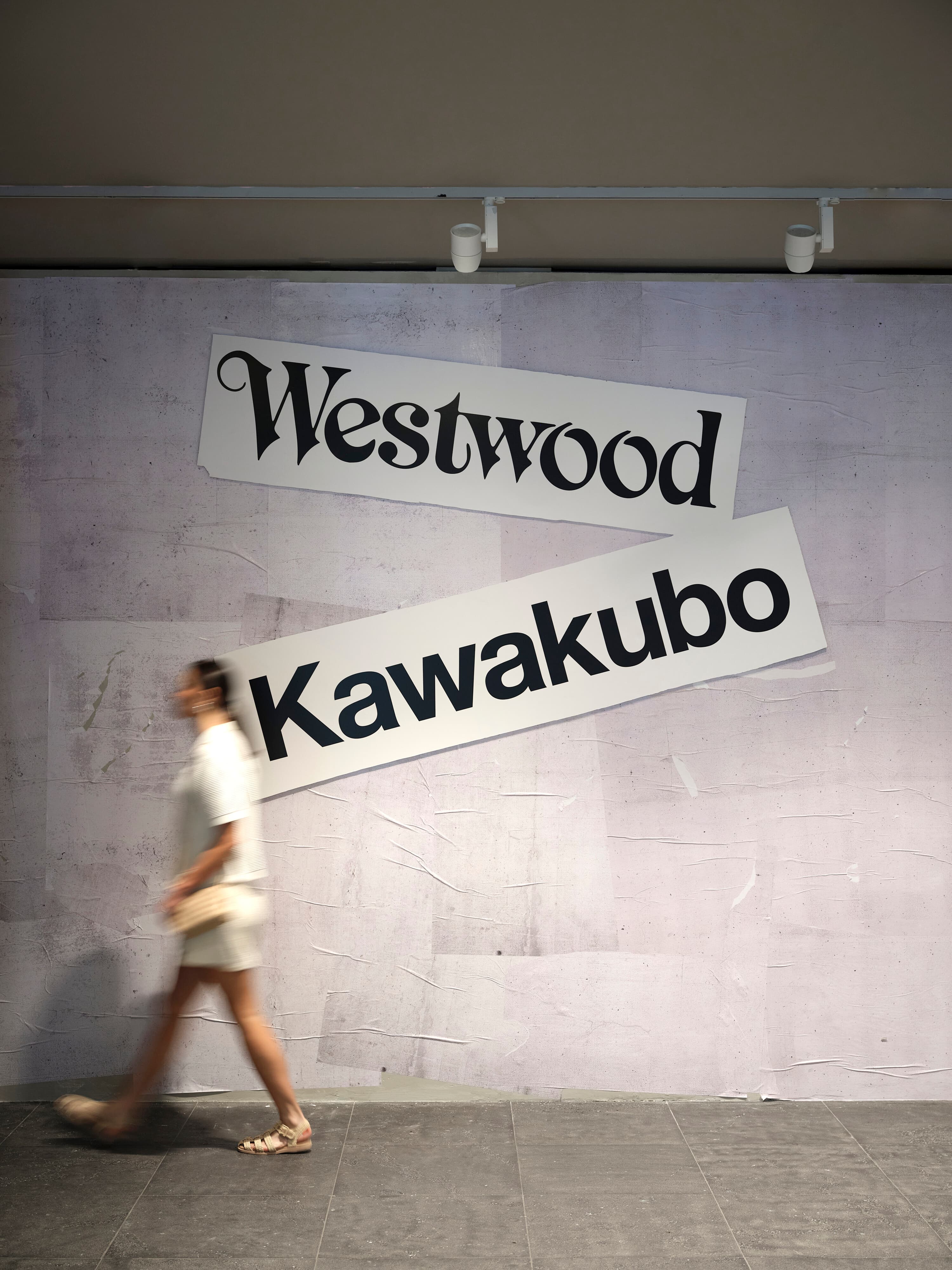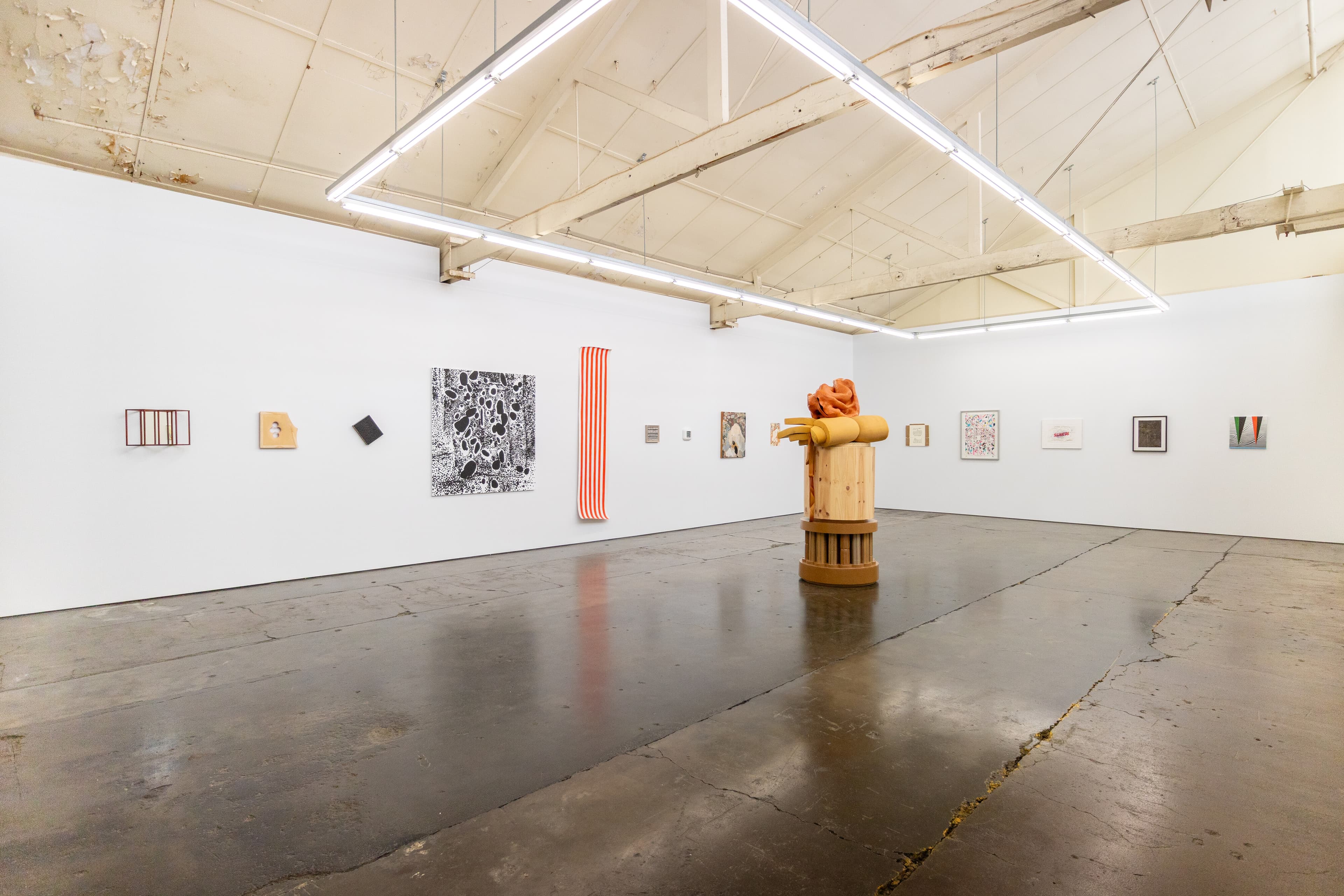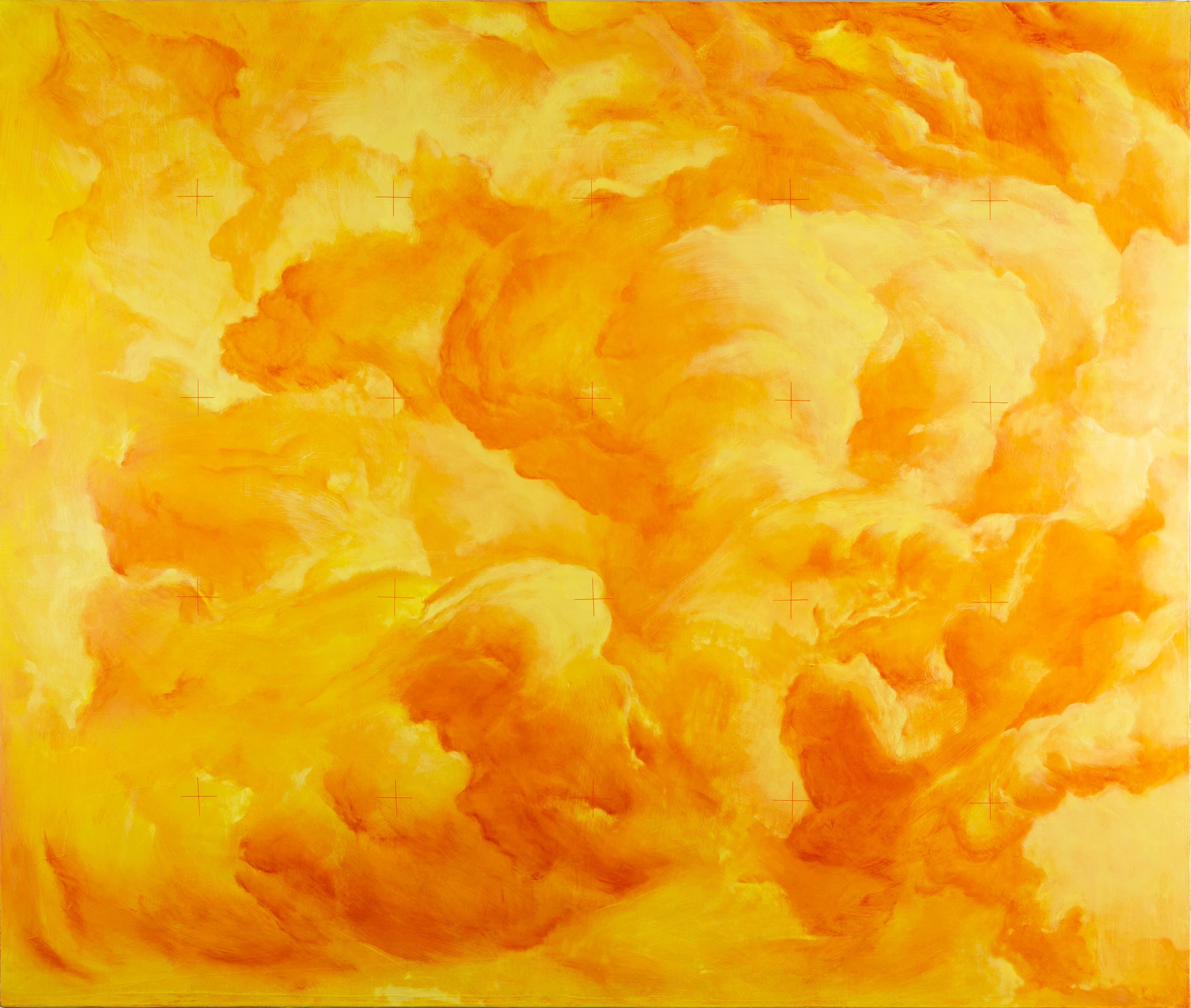Laure Prouvost: Oui Move in You
Tara McDowell
Laure Prouvost wants to take you on a journey. Her hand beckons, motioning here, this way, before becoming distracted by its own mobility, undulating up and down as if surfing outside a car window. Her voice is present, as always in her work, a feminine whisper accompanying the gesturing hand, come! This untitled video, installed on a small screen at the entrance to the artist’s solo exhibition at ACCA, Laure Prouvost: Oui Move in You, is more directional signage than a work as such, in that its purpose is to ensure you’ve set off in the right direction, which is the left side of the galleries. The right-side entrance greets you with a wall, onto which is placed a small painted sign warning: “NO TRES SPASSING Grand ma seas you.”
Such word play recurs throughout Prouvost’s practice. It speaks to a conspiratorial playfulness that verges on the childlike as well as an irreverence towards language, a desire to treat it materially and imperfectly. As the show’s title implies, slippages between French and English are common in her work, a practical outcome of the French-born artist living in the United Kingdom for almost two decades and an ethical imperative to refuse borders of all kinds, most flagrantly those of nations, languages, and bodies (she notoriously tunnelled between the French and British pavilions at the 2019 Venice Biennale, where she “represented” France). In conversation with curator Annika Kristensen at ACMI, after a screening of the video They Parlaient Idéale (2019), a centrepiece of her French pavilion presentation, Prouvost spoke of how important trespassing is to her, especially a trespassing of what’s expected of you, of what you’re meant to do. On the one hand, this is what art at its best can do (and has long done): trespass across categories, classifications, expectations, and thereby make them visible, and thus denaturalised. On the other hand, trespassing is an act of privilege, one not available to many, or with severe ramifications when it is done, as the heavily policed borders of the world make clear, those of Gaza among them.
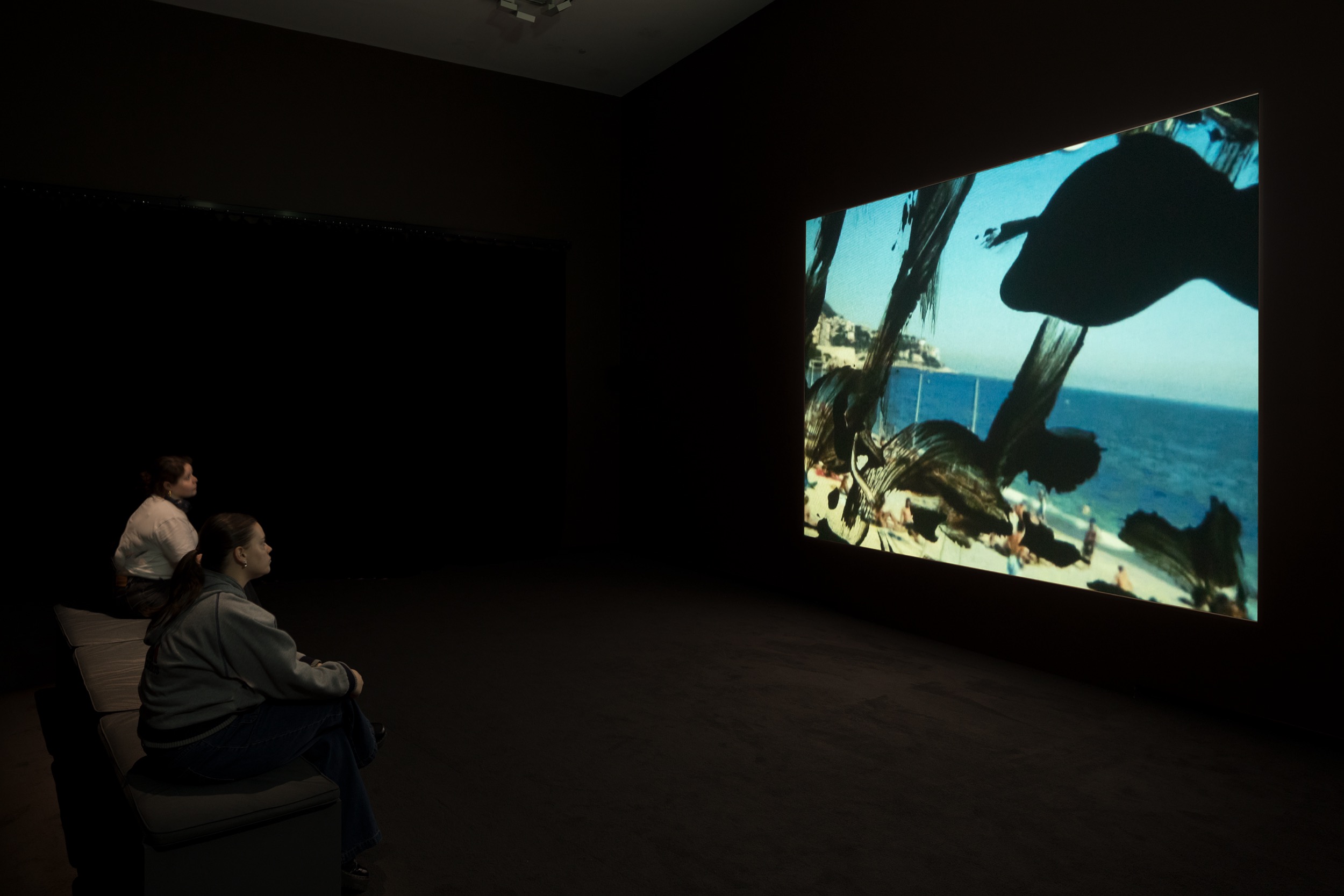
ACCA’s side-by-side twin entrances to its galleries means that exhibitions tend to eschew linear progression in favour of more open-ended layouts. But Prouvost has designed her show with a clear experiential narrative in mind—a kind of guided, spatialised storytelling in which you, dear visitor, are guided by the artist through a series of affective, intimate, even feminised set pieces. These are, in turn, the home, the campfire, the womb, the forest, and finally, the sky. These are disparate spaces, each with their own mythologies, cultural accretions, functions, and scales.
Prouvost is primarily a video artist—her practice comes from film, she explained in a floor talk with curators Max Delany and Annika Kristensen held during the exhibition’s opening weekend. A number of her videos are included throughout the exhibition, though several are staged within sculptural installations that serve as sensorial environments in which to experience each mise-en-scène. The show begins with her claustrophobic, bewitching, and very funny 2013 work Wantee (the home), and ends with the exuberant, transcendent Every Sunday, Grand Ma (the sky) from 2022, some ten years later. The subject of both videos is Grandma, who is arguably the protagonist of the show itself, and certainly the focus of the artist’s book produced by ACCA for the exhibition, H Oma Je. Punning off the English word homage, the title conjoins the French words oma, or grandmother, and je, the pronoun I. In its pages are around one hundred recollections by art world (and presumably, art-adjacent) denizens about their grandmothers or ancestral figures in their lives. It takes the place of an exhibition catalogue, pointedly replacing any art-critical writing about Prouvost’s work with a collection of memories by the grandchildren, as if, in the words of Rachel Cusk, “trying to give some kind of shape to … the feeling that … female history is a footprint in the sand.” Prouvost is nothing if not a bricoleuse—she collects images, objects, and here, in this book, stories about grandmothers. Her method of working, by her own admission, is like collage. Like a bowerbird, she builds nests; like an octopus, she takes you arm-in-arm and guides you through tunnels; like a child, she makes up stories and whispers them in your ear.

But I’m already recutting the story—let’s go back to the start, to the artist’s hand, and take it as Prouvost has left it for us. The show opens with Wantee, the artist’s Turner Prize–winning 2013 video about her Granddad, a conceptual artist who’s gone missing down a self-built tunnel to Africa, to the artist’s dismay. The artist guides us on a tour of Granddad and Grandma’s clay-smeared, decrepit living room, holding the camera tight and close, her hand reaching out and pointing to or touching various objects as she tells us about them—especially Granddad’s sculptures (“we have loads of them!” she tells us, because, alas, “no one’s interested” in metal sculpture anymore) and Grandma’s (infinitely better) ceramic teapots and cups, with their funny, weird, self-sabotaging lip openings and staircase handles. Wantee? The artist’s scream coincides with that of the teapot coming to boil—these dark, panicked moments rupture the lullaby of Prouvost’s entangled, multi-species, multi-sensorial baths of light and sound, and, as such, save the work from being, to adduce Hal Foster’s critique of immersive spectacle, “faux-phenomenological,” “techno-sublime” video art. Thankfully, like the jarring jump cuts she favours, they make frequent appearances in this show.

Grandma’s Jeanne Dielman-esque domestic servitude is only temporary, however. In the next room, she has escaped the confines of the living room for the campfire, and has found a number of other women, including a few major artists, with which to share that space. The installation comprises a campfire of driftwood, ceramic logs, a smattering of objects placed in the fire as well as around the room, along with a samovar and tea cups for visitors to help themselves, all animated by a light and sound track. The campfire’s title, Gathering Ho Ma, The Glaneuse (2023), is an homage to French filmmaker Agnès Varda, whose 2000 documentary’s English title, The Gleaners and I, elides the director’s self-identification with her subject in the original French, Les glaneurs et la glaneuse. Just as Prouvost is la bricoleuse, la glaneuse is Varda herself, as she intently trains her camera on her subjects, gleaners of all manner of cast-offs, with sincere, at times gleeful, curiosity. Varda was in her seventies when she made Les glaneurs et la glaneuse, so well within grandmother territory. The film has some funny moments—like her ferocious snatching of a heart-shaped potato that would have been discarded for being beyond the narrow frame of “normal.” For Varda, it becomes a totem, and reappears in Prouvost’s symbol-heavy room of reliquaries, along with Louise Bourgeois’s spiders and Grandmother’s slippers. Varda’s film also has some unflinchingly vulnerable moments, as when Varda films her aged hand, lingering on it, as if in a reverie, and says, “This is my project: to film with one hand my other hand. To enter into the horror of it. I find it extraordinary. I feel as if I am an animal; worse, I am an animal I don’t know.” Prouvost, by contrast, is less interested in such brutal honesty; her hand is, like Varda’s, a regular presence in her work, but it is in the service of a fabulist. It wants to touch as much as film.
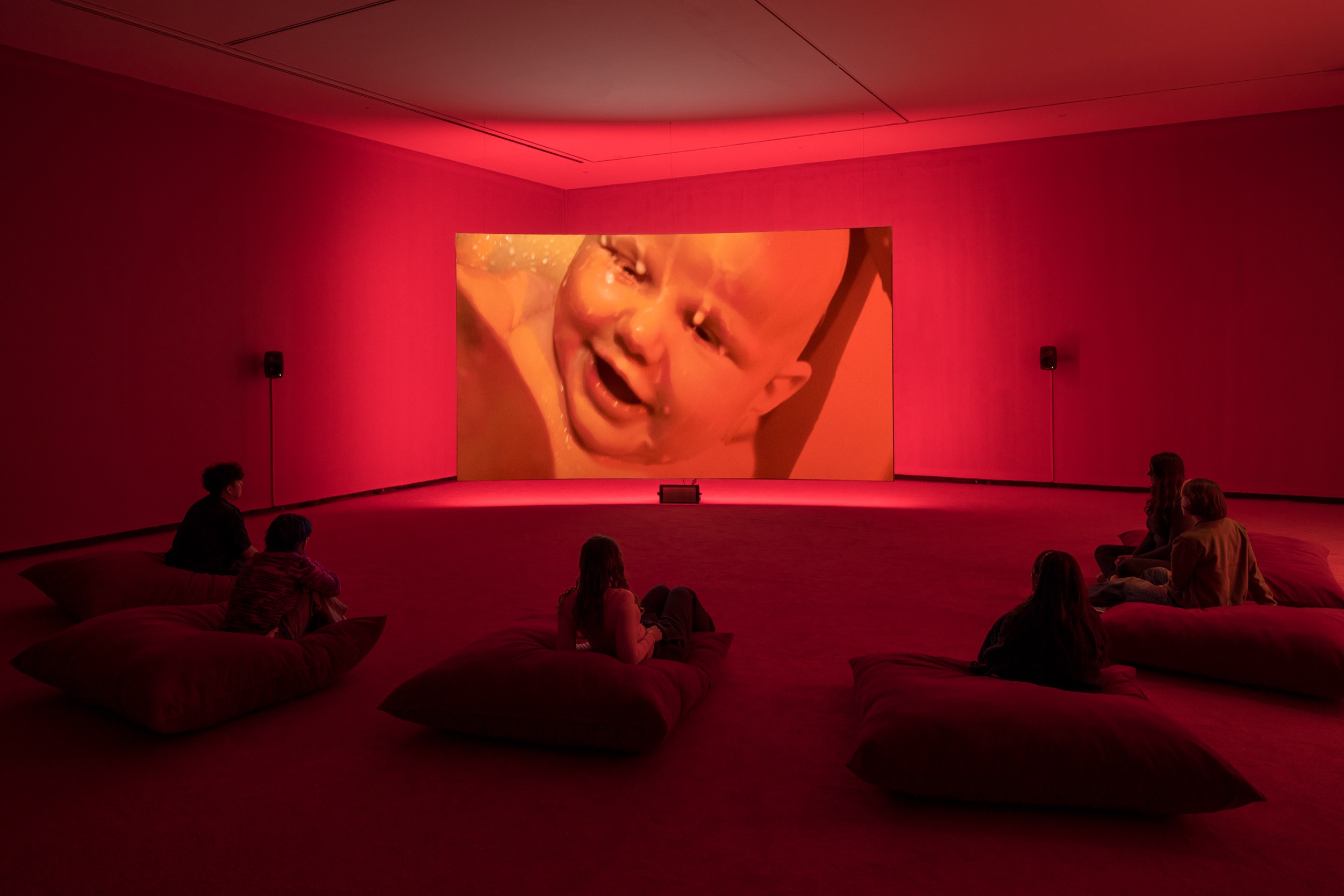
The next gallery is the womb, and it is the show’s strongest. It’s also one of the best uses of this corner space in my memory. A video, Four for see Beauties (2022), plays across a large, curved screen in a blood-red gallery—red walls, red carpet, and red plush bean bags (which, one hopes, will find a home in the staff offices after the show’s run). It’s a perfect space for the video projection played there, footage of a group of women touching, caressing, caring for, an infant, cut with scenes of aquatic life, most palpably, an octopus. Prouvost is clearly fascinated with the octopus (she wouldn’t be the first). If the heart-shaped potato is Varda’s totem, and the spider Bourgeois’s, the octopus may well be Prouvost’s. When she encourages us all to “feel with the arms, think with the eyes,” she could be alluding to the octopus’s nervous system, which is spread out all along its arms such that, as Amia Srinivasan puts it in “The Sucker! The Sucker,” her terrific account of octopi, “there is no clear distinction between brain and body.” An octopus’s arms “have more neurons than its brain … the arms can taste and smell, and exhibit short-term memory.” The octopus is an ancient creature, having split off from our own evolutionary path millions of years ago, such that it is one of the most alien, yet intelligent, creatures with which we share this planet. Prouvost describes the octopus as a mother; in it, we can attempt to grasp the beginning of life on earth.
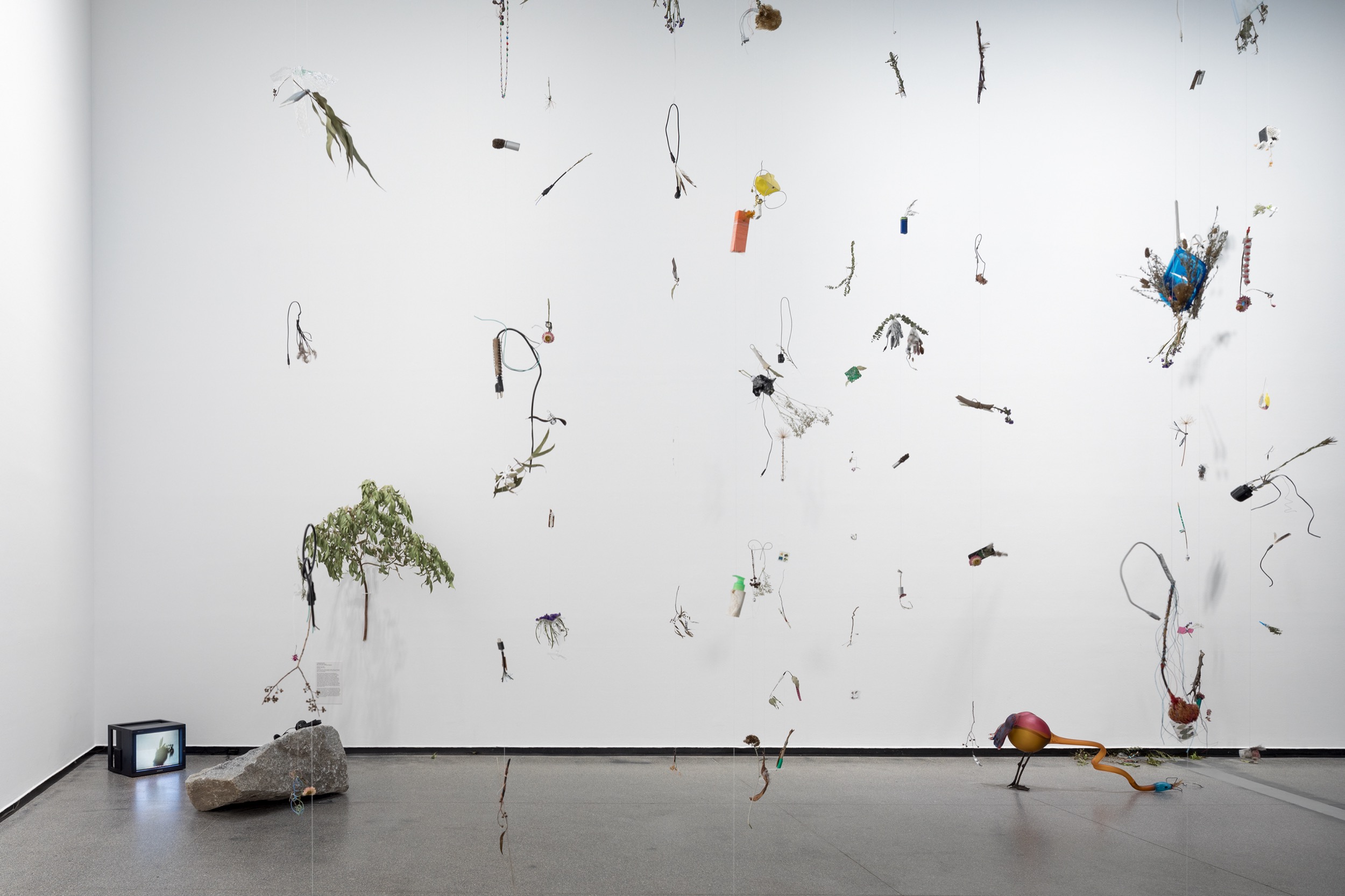
After the womb, you enter the forest, then the sky. In ACCA’s cavernous Gallery 1, La forêt (2024), a large-scale mobile of many delicate assemblages hanging from the ceiling, each a surrealist combination of a natural and a human-made something, fused together as if to point to the already entangled nature of both. The newly commissioned installation was in turn outsourced by the artist to our Narrm Melbourne community, via workshops for teachers hosted by ACCA Education. I suspect that delegated labour, like collaging new combinations from her video library, aids this in-demand contemporary artist in producing the many projects asked of her. To wit: Prouvost’s website lists three solo exhibitions on view at this very moment, in The Netherlands, China, and Narrm Melbourne, with a fourth opening next week, also in China. If I’ve counted correctly, there are also a staggering nine group shows featuring her work on this day, mostly scattered across Europe. And the works in the ACCA show have mostly been shown before, including some appearing at a solo show at Remai Modern, Laure Prouvost: Oma-Je (2023–2024) and at the Kunsthalle Wien, Laure Prouvost: Ohmmm age Oma je ohomma mama (2023)

Further on in the gallery is Grandma herself, at last physically, exuberantly present as she jumps, in her exquisite naked glory, from an airplane piloted by Granddad (found, at last!) and soars above the clouds. The video, Every Sunday, Grand Ma (2022) is accompanied by an installation whose primary components include locally sourced granite rocks, blown glass birds, and a smoke machine. The clear star of the show is Grandma, who has escaped the dreary, patriarchal confines of her apartment (and her absent partner) and transcended (or transferred, as Prouvost might have it) that immanent, banal existence for a state of levitation, not to mention pure joy. Some stories do have happy endings.
In her 1972 essay “On Being a Grandmother,” cultural anthropologist Margaret Mead writes of a friend who defines “the human unit of time as a space between a grandfather’s memory of his own childhood and a grandson’s knowledge of those memories as he heard about them.” She continues, “We speak a great deal about human scale; we need also a human unit in which to think about time.” This, I think, is what this show is about: the uniqueness of this moment—so fleeting, so omniscient—in a woman’s life, in which she temporally becomes more promiscuous, her knowledge stretching to encompass both her grandmothers and her children (biological or otherwise), even as she cedes visibility as an “object” in the world.
Tara McDowell is Associate Professor and Director of Curatorial Practice at Monash University. Her current book project, The Mother Artist, is a study on contemporary art and mothering.
